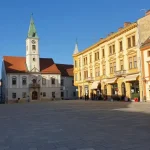June 12, 2019 – As temperatures soar in Croatia and that wet May is all but forgotten, a look at how the number of hot days are increasing over time in various Croatian destinations – and how much hotter things could become.
I predict that fat pink Brits like me will be extinct as a species if this carries on. The summer heat is already becoming unbearable for someone born in the rain in Manchester. It didn’t used to feel this way, and the onset of the summer heat appears a lot more sudden than it did when I first moved to Croatia back in 2002.
And the statistics seem to not only bear out that change, but predict that much more is to come. Great news if you like it hot (I guess), but not so great for pink Englishmen.
The New York Times came out with a fascinating tool last summer, where you could see how much hotter your hometown has become since you were born. And, worryingly, how much hotter is will become in the future. The analysis was conducted for The New York Times by the Climate Impact Lab, a group of climate change scientists, economists and data analysts from the Rhodium Group, the University of Chicago, Rutgers University and the University of California, Berkeley.
It should be borne in mind that the rise in temperatures could easily be higher – the future predictions are based on countries curbing emissions roughly in line with the Paris Agreement pledges.
The tool focuses on one topic – how many days of 32 C does your hometown have – in the year of your birth, today, and in the future.
I started with Manchester, but that did not register (I guess you need to have some sun to qualify) and then I had a look at various destinations around Croatia, starting 50 years ago.
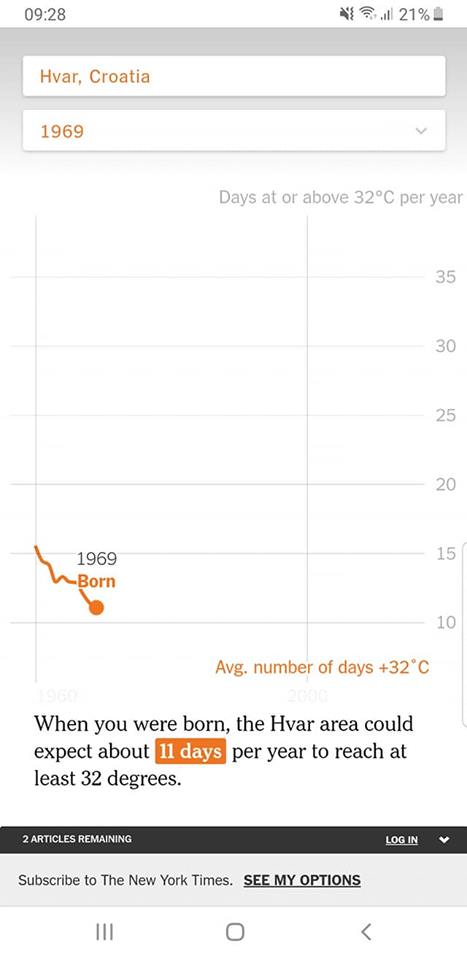
Where better to start than the sunshine island, which had 11 days a year of 32C temperatures back in 1969.
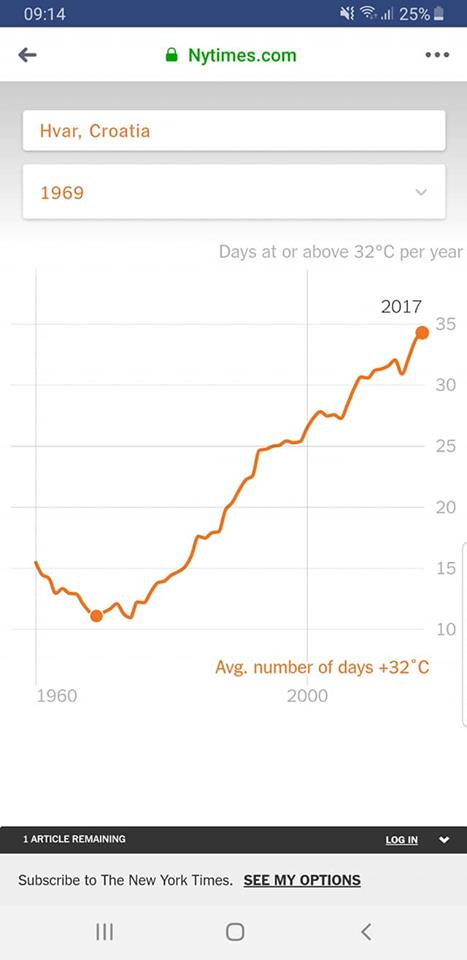
Compared to 34 today.
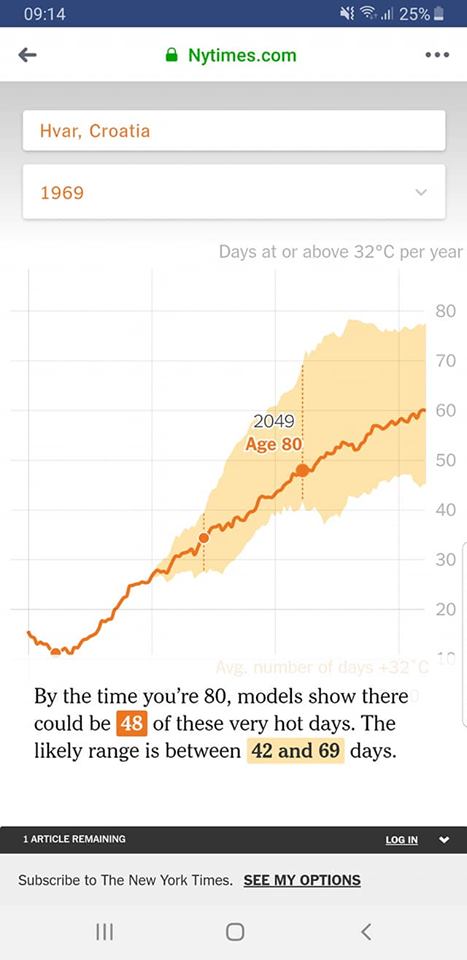
And quite a few more in the years ahead.
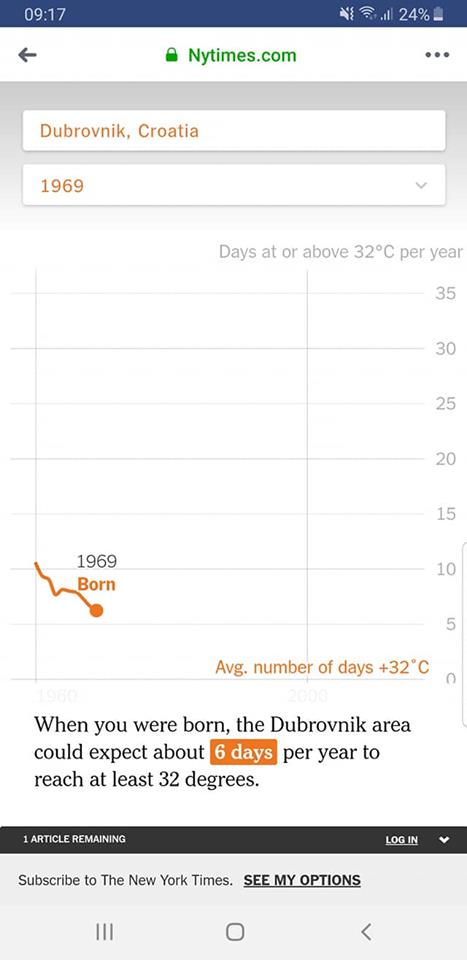
Dubrovnik was not quite as hot as Hvar 50 years ago.
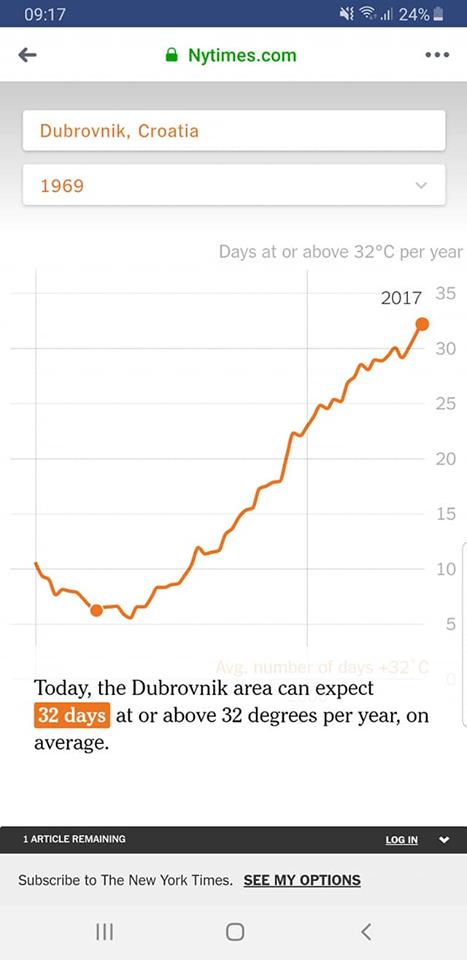
But it is catching up.
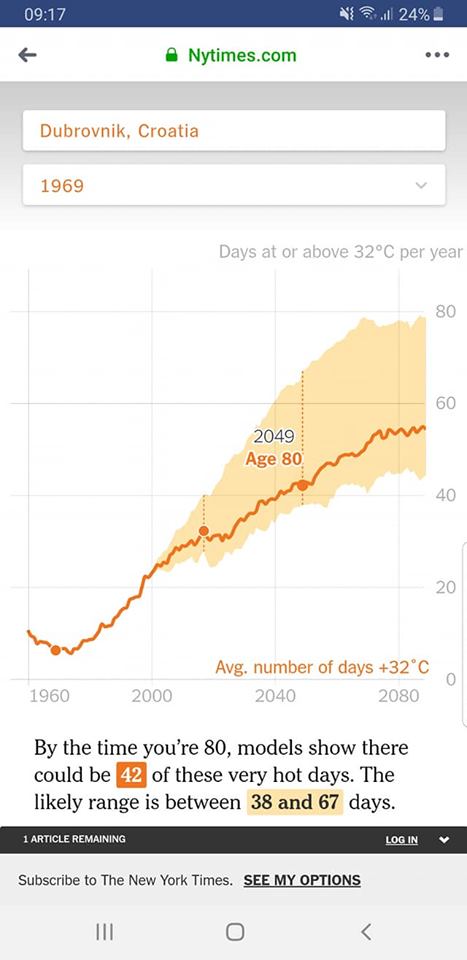
And many hot days on the beach await.
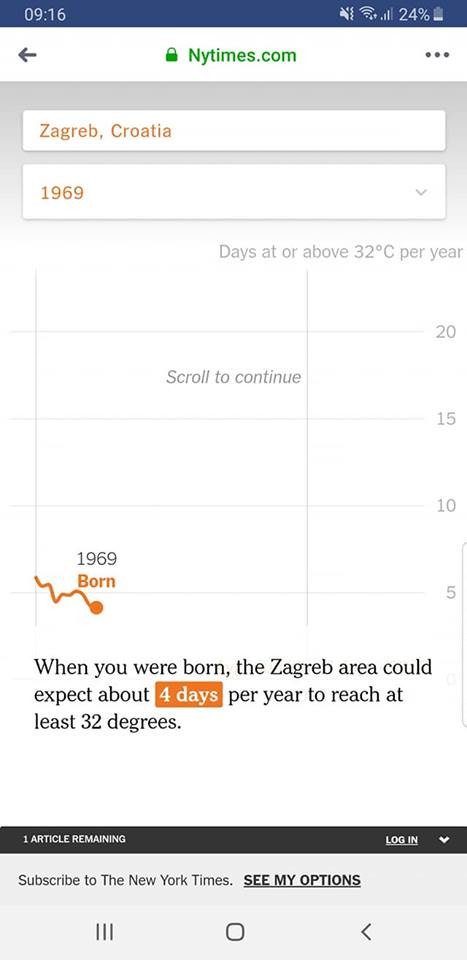
Things are also hotting up in the Croatia capital.
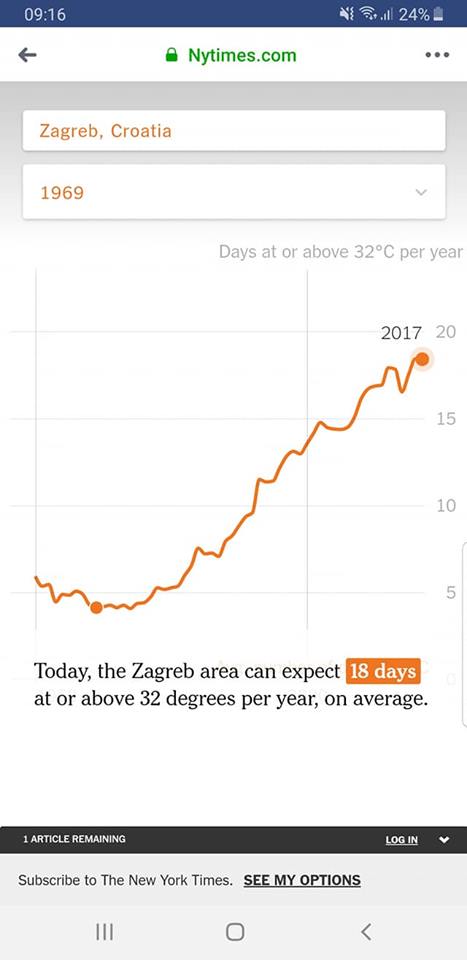
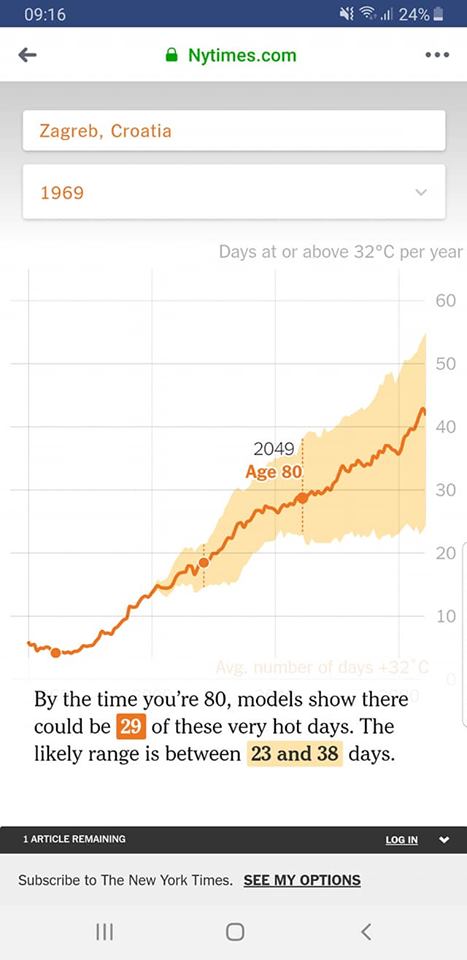
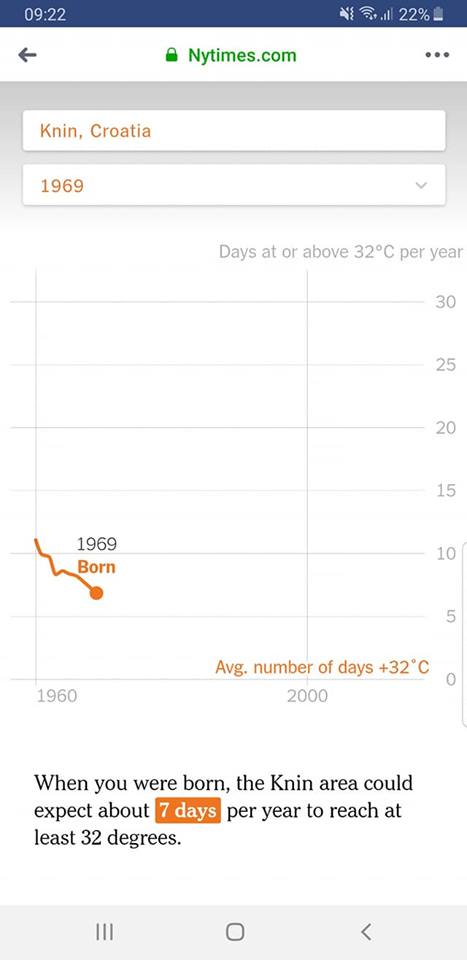
I think the hottest place I have ever been in Croatia was Knin in August.
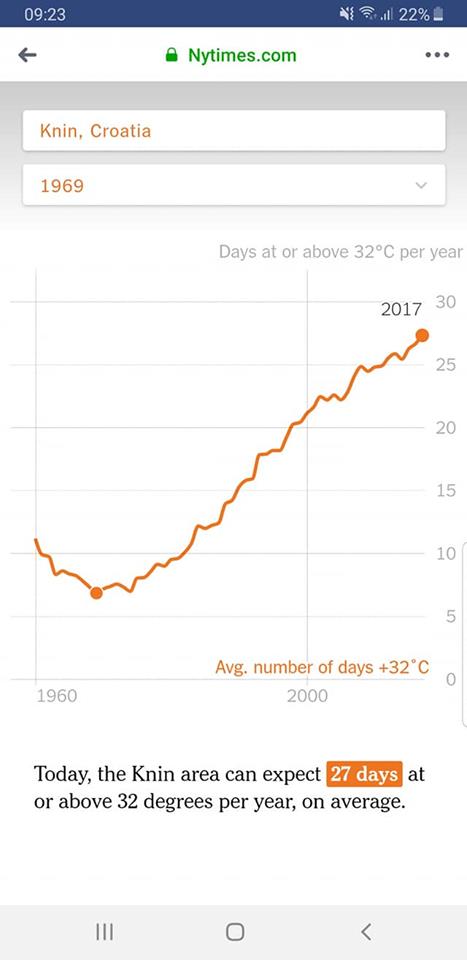

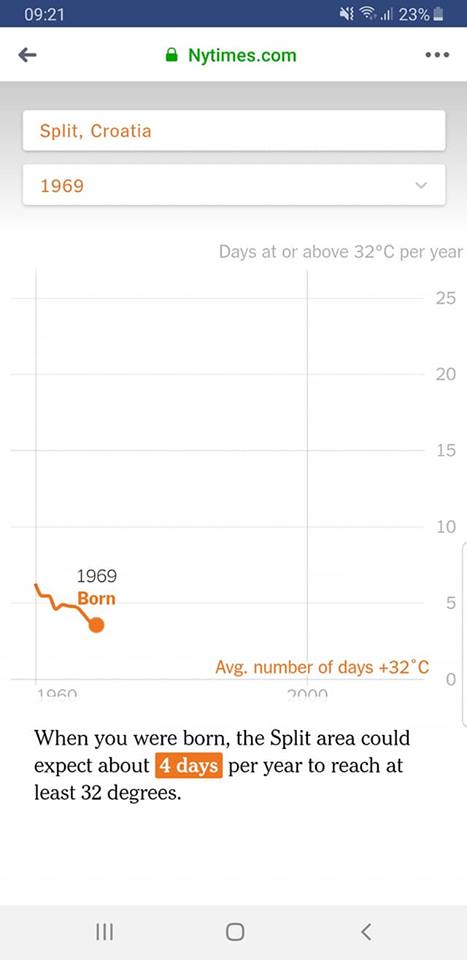
And this is how things have changed and are projected to change in Split.
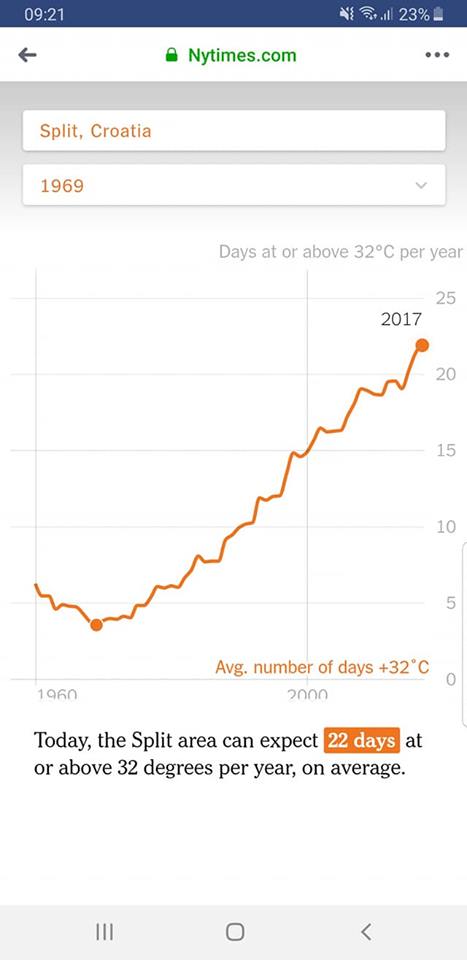
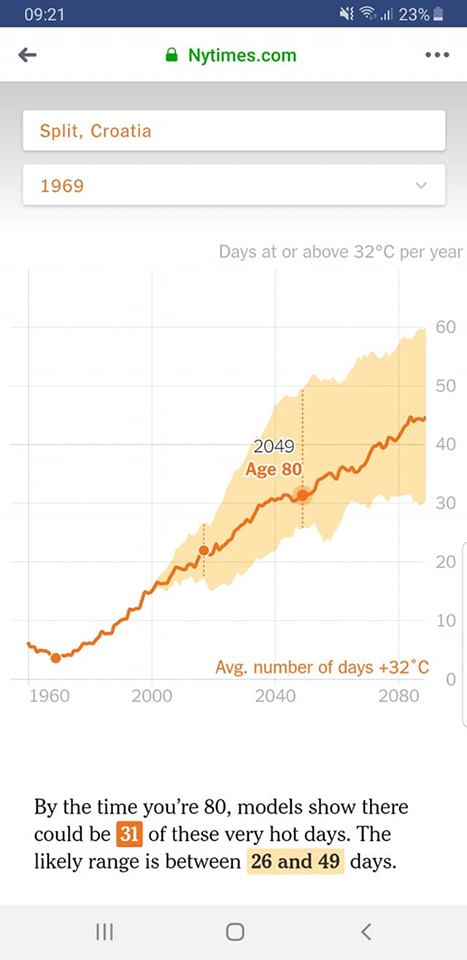
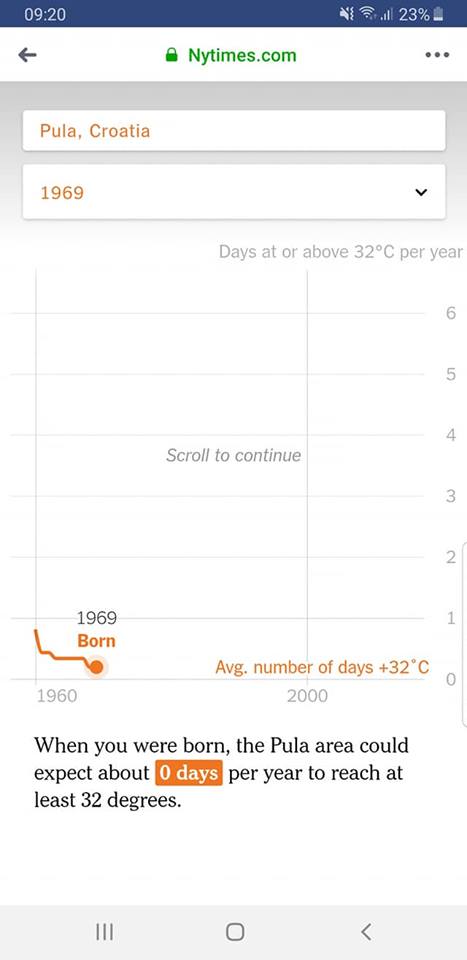
In love with Croatia and planning to buy a home, but prefer cooler temperatures by the coast? You may want to take a closer look at Pula.
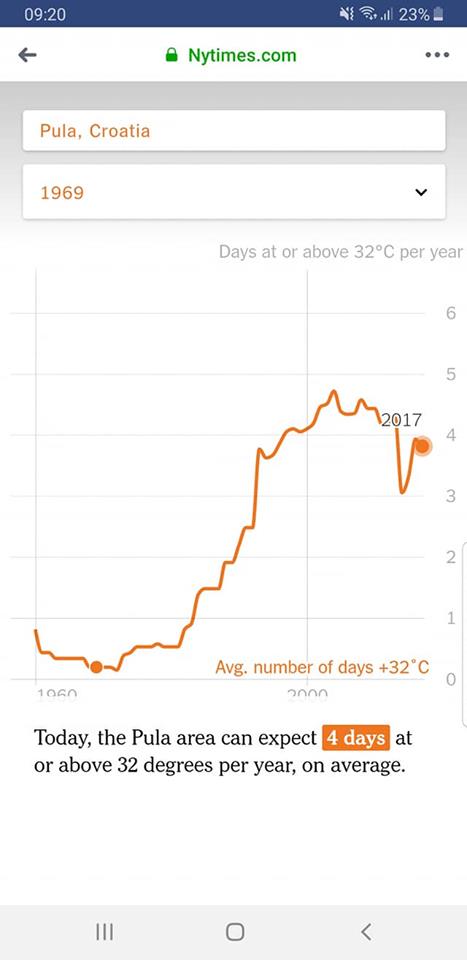
Istria’s largest city didn’t even have days at 32C half a century ago, and they are still quite rare these days.
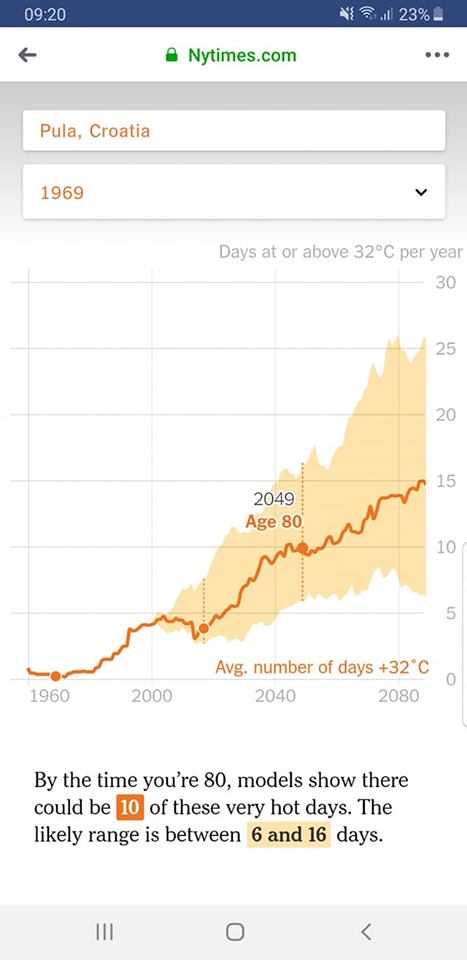
And although they are set to increase, the rise is not predicted to be as dramatic elsewhere.
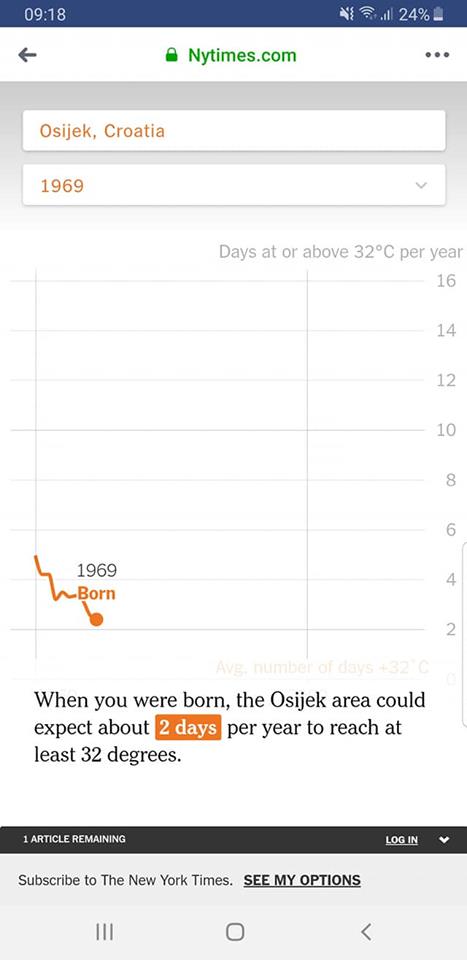
Another city away from the coast which not traditionally swelteringly hot is Osijek, which lies on the Danube.
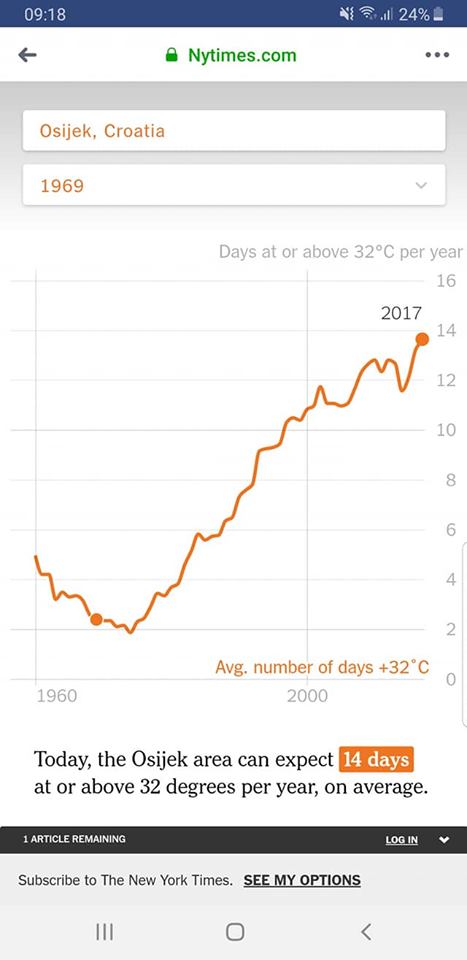
As elsewhere in Croatia, things have changed, however.
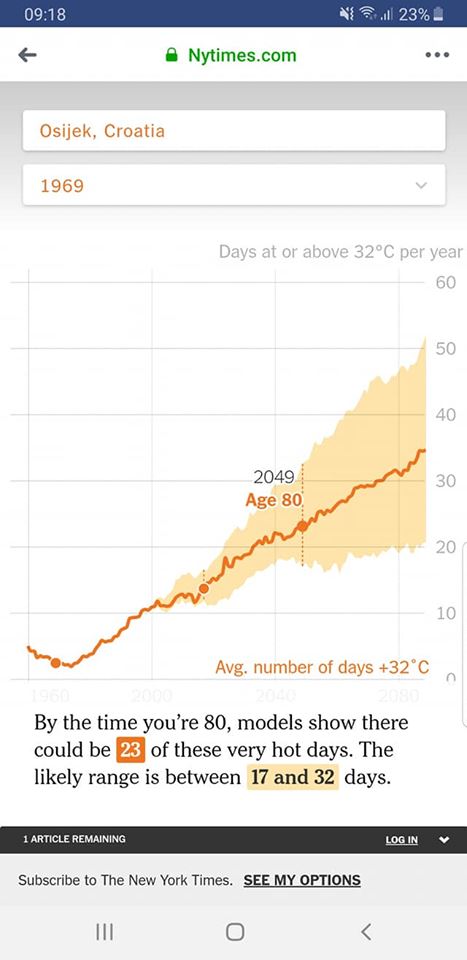
And the future is looking a lot hotter than in Pula.
All these Croatian temperatures pale into insignificance, however, when compared to the hottest place I have ever lived in and worked – Bosasso, the capital of the breakaway autonomous republic of Puntland in eastern Somalia – heartland of those infamous Somali pirates.
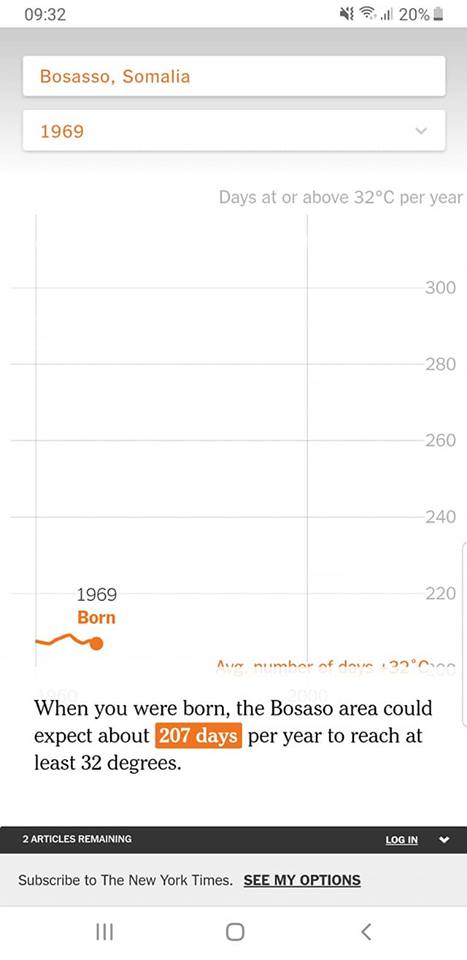
I think if I had been born there, I would have been able to withstand the heat a lot more.
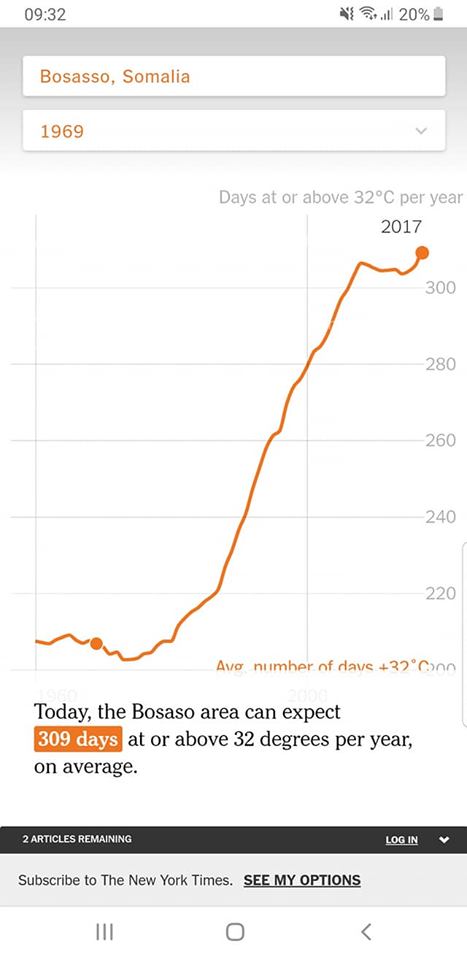
And you can perhaps understand how some Africans have real trouble dealing with the cold.
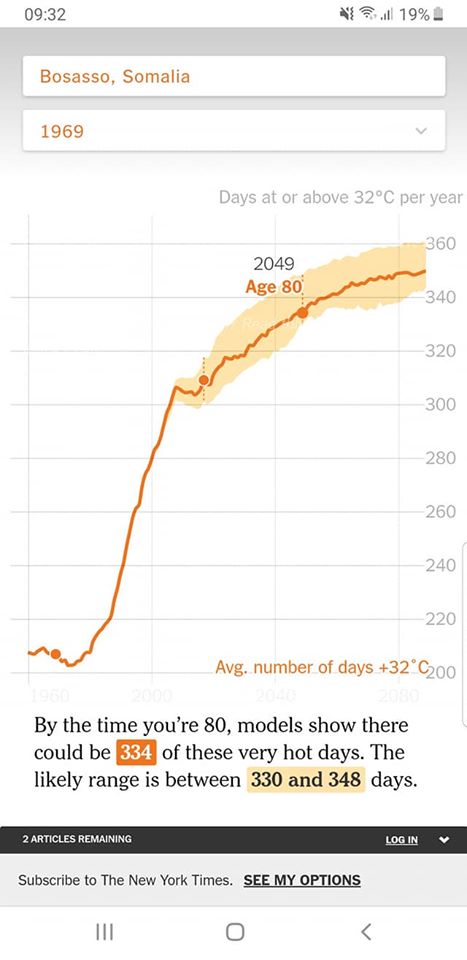
I wonder if there are already any places on the planet where it is already 32C every day of the year.
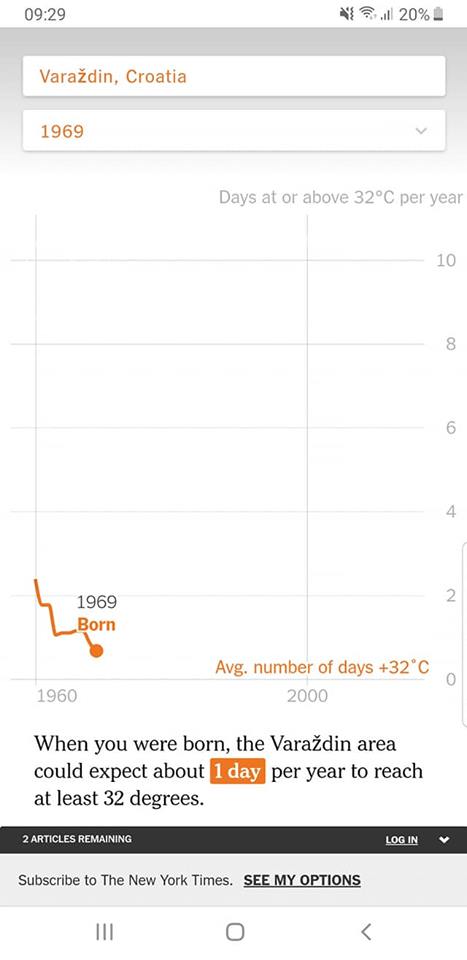
Looking at the data, there seems to be some method in my decision to move from the warmth of Hvar to the cooler climes of Varazdin.
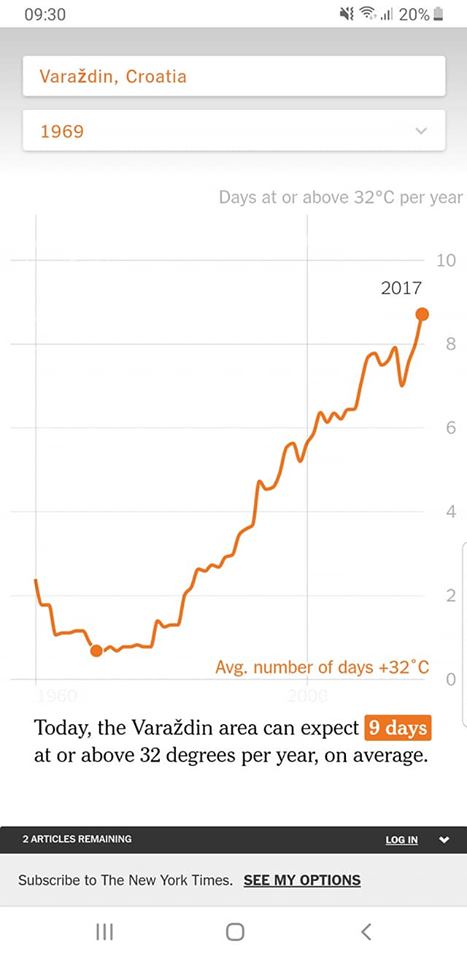
As with Pula, the very hot days are still relatively rare.
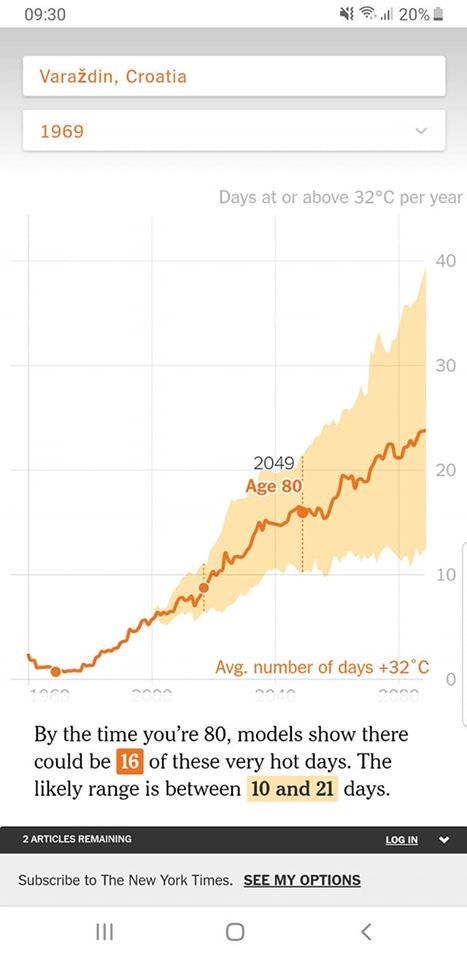
And, just to stress again according to the experts, these numbers are only if the emission curbs of the Paris Agreement are met.
There is nothing like seeing a global problem in a local environment to put things in perspective – a really important and useful tool from The New York Times. Check out your hometown or destination here.




